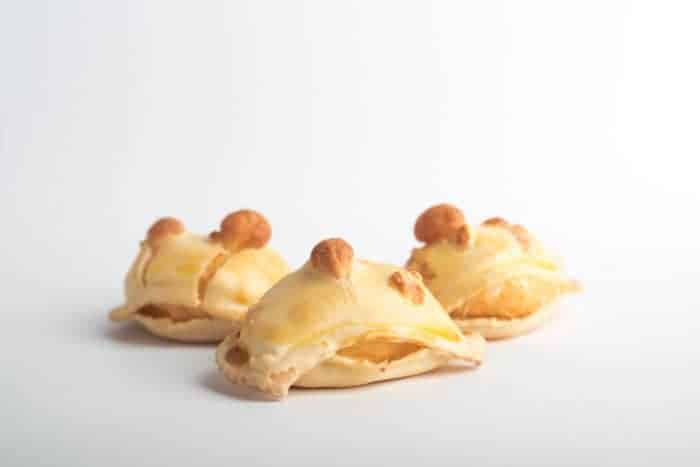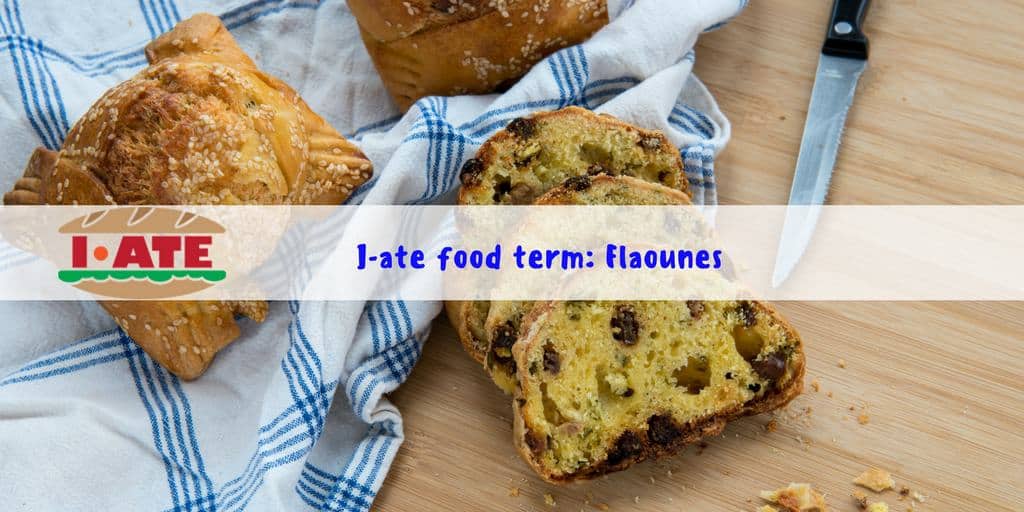
Flaounes: a food journey to Cyprus
For this pre Easter week end TermCoord brings you to a tasty food-journey to…Cyprus!
Have you ever heard about flaounes?
The word ‘flaouna’ comes from the ancient Greek παλάθη – a cake which was usually associated with the religious celebrations of Spring. It probably entered European languages through the old German word flado, a pastry made with eggs, milk and cheese (Latin flado medieval French flaon ⇒ flan.
In Italy, a similar word is fiadone, which is currently a traditional typical Easter pastry in Abruzzo and Molise. With the same name, this pastry exists also in Corsica.
In Spain, there is a similar pastry called flaó, particularly typical of the Balearic islands and Valencian Community.
What do they have in common?
Basically three things: their shape, their cheese base, and the time of the year in which they are consumed: Easter, of course! It is not the case, that the proto indo-European root of the word means generally flat, broad.
- Cypriots flaounes
Flaounes (flaouna in singular) are the iconic symbol of authenticity and genuinity of the Easter time. These buns are stuffed with halloumi (the national cheese), raisins, mint, mahlab (a peculiar spice made from St. Lucy’s cherry enriching numerous Greek and Middle Eastern dishes). The traditional preparation of this speciality begins before Easter day: the choice of ingredients is paramount to determine the genuine taste of the flaounes.
The preparation of this tasty delight is traditionally familiar and collaborative. The result can be offered to guests or exchanged with families or beloved ones!
Do you want to make an original present for next Easter? Have a look at the recipe!

- Fiadoni (Abruzzo and Molise Italy)
Fiadoni (singular Fiadone) are very popular in Abruzzo and Molise regions. The recipe and the shapes can be different according to the geographic area. Nevertheless, they resemble ravioli and panzerotti, and they are filled with cheese or ricotta.
Have a look at the recipe in Italian!
- Corsican Fiadone
The variant of the Corsican Fiadone is traditionally made with brocciu, a fresh goat’s or sheep’s milk cheese. The word brocciu (brucciu or brocciu), an emblem of the Corsica region, means “to beat” or “to whip”. This soft cheese presents a mild taste and a soft texture. Behind this food there is a very folkroristic legend, animated by ogres and shepherds.
Click here to read it https://www.196flavors.com/france-fiadone/
In the Ajaccio area fiadone it is known as Imbrucciata.
- Flaons (Spain)
Flaó (plural flaons), traditionally made for the Easter celebrations, are now available in many pastry shops all year long and they are mostly consumed in Catalan speaking countries!
You might be wondering about the relation between Catalonia and Cyprus, but luckily, the historian Jaume Fàbrega was asked the question before us: the recipe could have been imported in the XIV century by a Catalan Queen who married Pedro of Cyprus, or by commercial exchanges. There are many variants of this treat according to the region: in Ibiza and Formentera they have an aromatic taste thanks to the peppermint and they are accompanied by local sweet wines and digestives!
In Morella , an ancient walled city located on a hill in the Maestrazgo region, flaons are emblematic.
In Calaceit they are called flaonets and the filling consists in smashed pumpkins and honey!
These are just some of the variants of the Flaounes and we will be very pleased to discover the variants from your country! Have a nice Easter from TermCoord!

References
- https://ore.exeter.ac.uk/repository/bitstream/handle/10871/20229/final_Recipes.pdf?sequence=1
- https://www.196flavors.com/france-fiadone/
- https://blog.giallozafferano.it/incucinadaeva/fiadoni-abruzzesi/
- https://www.bbc.co.uk/food/recipes/pauls_flaounas_89782
 Written by Flaminia Paternoster– Trainee at the TermCoord
Written by Flaminia Paternoster– Trainee at the TermCoord

